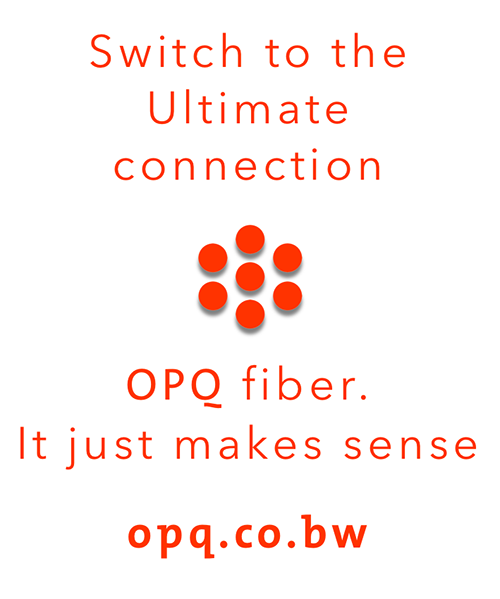Botswana will not be left behind as the world adapts to new revolutions in terms of cutting-edge technology.
In recent times, there have been new developments around Artificial Intelligence (AI). News worth celebrating are that two Batswana are breaking barriers in innovation and technology with the invention of the first Setswana AI (Artificial Intelligence).
The two innovators whose invention is bringing AI closer to home by creating the first-ever Setswana AI are Kitso Speaks and Glen Mokoka. This ground breaking innovation is not just a technological marvel but a celebration of Botswana language, culture and identity.
Unpacking the exciting development, Kitso Speaks tells this publication that for the ordinary Motswana, this AI is a bridge between tradition and the future, offering new possibilities for education, health, and just about everyday life.
For an ordinary Motswana selling vegetables at the market, the farmer at a rural area, or students, the sky is the limit. Speaking in an interview, he explains that he has always been passionate about technology and its potential to uplift communities.
“I grew up seeing how technology was advancing globally, but it felt like our languages and cultures were being left behind,” he says. He wanted to create something that would make technology relatable to the ordinary Motswana, something that speaks to them in their own language.
His vision was simple, yet profound, which was to create an AI that could understand and speak Setswana fluently, making technology accessible to those who might not be comfortable with English or other dominant languages.
“But to turn this vision into reality, I knew that I needed a partner who shared my passion and expertise. And this is where Glen Mokoka, a software engineer with a deep understanding of AI and a love for African languages comes in,” he explains.
Together, they embarked on the journey to building this ground-breaking innovation, a project that would not advance Natural Language Procession (NLP) research but also empower Batswana in ways never imagined.
Breaking down how Setswana AI works, Mokoka points out that for many the term ‘AI’ might sound like something straight out of a science fiction trilogy. But in simple terms, he explains that the Setswana AI is like a very smart computer program that can understand, speak and write in Setswana.
“It can be used in various ways such as education, helping students learn Setswana whether it is through interactive lessons or translating difficult English concepts to Setswana.
“It can also be used in healthcare, where it can provide medical information in Setswana, making it easier for people in rural areas to access health advice.
“Other uses include in business, where it can assist small business owners with accounting, customer service or even writing professional emails in Setswana,” he explains.
Painting a scenario, he says that one can only imagine a farmer in Kanye being able to ask their phone in Setswana, “Ke eng se se ka tlhokegang mo temong yame?” (What do I need for my field).
And getting an accurate helpful advice.
“That is the power of this AI. It is designed to serve the everyday needs of Batswana,” he points out.
Among the challenges they faced was that they were venturing into a new territory which has never been done before locally, and creating AI in Setswana was an uphill battle. The two faced a
number of challenges including some that are surprising. Some of the challenges included lack of digital Setswana resources. Now, unlike English which has vast amounts of digital data available, Setswana has limited online resources.
“We had to start from scratch. We collected books, newspapers, and even recorded conversations to build a dataset for the AI to learn from,” Speaks says.
Mokoka quips in that the complexity of Setswana grammar was yet another challenge. Setswana is a rich and complex language, with nuances that are difficult for machines to understand.
“For example, the way we use prefixes and suffixes in Setswana can completely change the meaning of a word,” Mokoka says. “Teaching the AI to recognise these patterns was a huge challenge,” he adds.
They also had to come face to face with the reality of limited funding and support. Developing AI technology requires significant resources ranging from powerful computers to skilled programmers. To achieve their goals, Speaks says they often had to dig deep into their pockets, and relied on the support of friends who believed in their vision.
But they also faced another hurdle which is scepticism from others. They came across doubting Thomases who did not believe in the project. “Some people asked us why Setswana, and questions such as who will use it. But we knew that if we didn’t do this, no one else would,” Mokoka elaborates.
Meanwhile, while AI has been trained in standard Setswana, they are currently working in incorporating regional dialects to make it more inclusive. They are also developing mobile-friendly applications so that anyone with a smartphone can access it.
Furthermore, while the focus was primarily on the Setswana language, the technology can be adapted for other African languages, making it a valuable tool for the entire continent. The creation of the Setswana AI is more than just a technological achievement; it’s a gift to Botswana and a testament to the power of innovation and collaboration. By bringing Setswana into the digital age, Speaks and Mokoka have given Batswana a tool to preserve their language and culture while embracing the future.
“This project is not just about technology,” Speaks said. “It’s about identity, pride, and the belief that our language matters. It’s about showing the world that Botswana has a place in the global AI conversation.”
Mokoka added, “We hope this inspires young Batswana to pursue careers in technology and to see that they too can create solutions that impact their communities.”
The duo is already working on expanding the AI’s capabilities and exploring new applications. They are also calling for more support from governments, businesses, and educational institutions to ensure that the Setswana AI reaches its full potential.
“We have planted the seed,” Speaks says, “now, we need everyone to help it grow”.
In recent times, there have been new developments around Artificial Intelligence (AI). News worth celebrating are that two Batswana are breaking barriers in innovation and technology with the invention of the first Setswana AI (Artificial Intelligence).
The two innovators whose invention is bringing AI closer to home by creating the first-ever Setswana AI are Kitso Speaks and Glen Mokoka. This ground breaking innovation is not just a technological marvel but a celebration of Botswana language, culture and identity.
Unpacking the exciting development, Kitso Speaks tells this publication that for the ordinary Motswana, this AI is a bridge between tradition and the future, offering new possibilities for education, health, and just about everyday life.
For an ordinary Motswana selling vegetables at the market, the farmer at a rural area, or students, the sky is the limit. Speaking in an interview, he explains that he has always been passionate about technology and its potential to uplift communities.
“I grew up seeing how technology was advancing globally, but it felt like our languages and cultures were being left behind,” he says. He wanted to create something that would make technology relatable to the ordinary Motswana, something that speaks to them in their own language.
His vision was simple, yet profound, which was to create an AI that could understand and speak Setswana fluently, making technology accessible to those who might not be comfortable with English or other dominant languages.
“But to turn this vision into reality, I knew that I needed a partner who shared my passion and expertise. And this is where Glen Mokoka, a software engineer with a deep understanding of AI and a love for African languages comes in,” he explains.
Together, they embarked on the journey to building this ground-breaking innovation, a project that would not advance Natural Language Procession (NLP) research but also empower Batswana in ways never imagined.
Breaking down how Setswana AI works, Mokoka points out that for many the term ‘AI’ might sound like something straight out of a science fiction trilogy. But in simple terms, he explains that the Setswana AI is like a very smart computer program that can understand, speak and write in Setswana.
“It can be used in various ways such as education, helping students learn Setswana whether it is through interactive lessons or translating difficult English concepts to Setswana.
“It can also be used in healthcare, where it can provide medical information in Setswana, making it easier for people in rural areas to access health advice.
“Other uses include in business, where it can assist small business owners with accounting, customer service or even writing professional emails in Setswana,” he explains.
Painting a scenario, he says that one can only imagine a farmer in Kanye being able to ask their phone in Setswana, “Ke eng se se ka tlhokegang mo temong yame?” (What do I need for my field).
And getting an accurate helpful advice.
“That is the power of this AI. It is designed to serve the everyday needs of Batswana,” he points out.
Among the challenges they faced was that they were venturing into a new territory which has never been done before locally, and creating AI in Setswana was an uphill battle. The two faced a
number of challenges including some that are surprising. Some of the challenges included lack of digital Setswana resources. Now, unlike English which has vast amounts of digital data available, Setswana has limited online resources.
“We had to start from scratch. We collected books, newspapers, and even recorded conversations to build a dataset for the AI to learn from,” Speaks says.
Mokoka quips in that the complexity of Setswana grammar was yet another challenge. Setswana is a rich and complex language, with nuances that are difficult for machines to understand.
“For example, the way we use prefixes and suffixes in Setswana can completely change the meaning of a word,” Mokoka says. “Teaching the AI to recognise these patterns was a huge challenge,” he adds.
They also had to come face to face with the reality of limited funding and support. Developing AI technology requires significant resources ranging from powerful computers to skilled programmers. To achieve their goals, Speaks says they often had to dig deep into their pockets, and relied on the support of friends who believed in their vision.
But they also faced another hurdle which is scepticism from others. They came across doubting Thomases who did not believe in the project. “Some people asked us why Setswana, and questions such as who will use it. But we knew that if we didn’t do this, no one else would,” Mokoka elaborates.
Meanwhile, while AI has been trained in standard Setswana, they are currently working in incorporating regional dialects to make it more inclusive. They are also developing mobile-friendly applications so that anyone with a smartphone can access it.
Furthermore, while the focus was primarily on the Setswana language, the technology can be adapted for other African languages, making it a valuable tool for the entire continent. The creation of the Setswana AI is more than just a technological achievement; it’s a gift to Botswana and a testament to the power of innovation and collaboration. By bringing Setswana into the digital age, Speaks and Mokoka have given Batswana a tool to preserve their language and culture while embracing the future.
“This project is not just about technology,” Speaks said. “It’s about identity, pride, and the belief that our language matters. It’s about showing the world that Botswana has a place in the global AI conversation.”
Mokoka added, “We hope this inspires young Batswana to pursue careers in technology and to see that they too can create solutions that impact their communities.”
The duo is already working on expanding the AI’s capabilities and exploring new applications. They are also calling for more support from governments, businesses, and educational institutions to ensure that the Setswana AI reaches its full potential.
“We have planted the seed,” Speaks says, “now, we need everyone to help it grow”.







